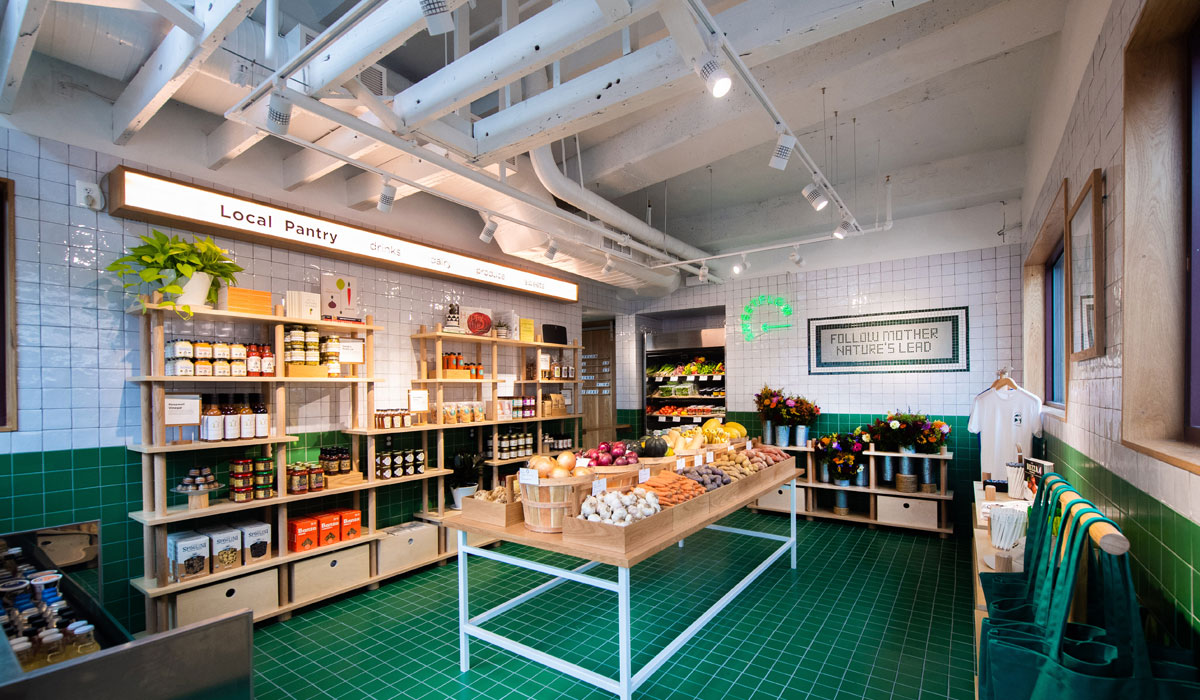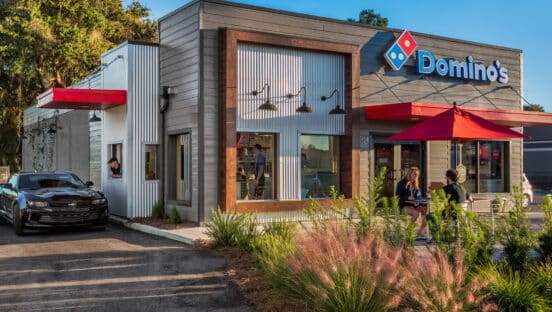We are living in a time of unprecedented change in the economy and in the world at large, and nowhere is that more evident than in the restaurant industry. But out of every crisis also comes innovation and opportunity, as we’ve seen from decades of experience.
Over the past six years, Green Circle has advised numerous clients across the food and beverage ecosystem, assisting forward-looking and better-for-you brands in raising needed growth capital or in achieving an exit. In the wake of COVID-19, the company launched Restaurants Practice as an extension of its F&B network and expertise, to serve the adjacent restaurant industry.
In a two-part series, we will explore first why we’re bullish on the fast-casual space after COVID-19, and second, where operators and investors should converge within the category to create the most value for all.
Editor’s note: Part 2 will be published at a later date.
PART 1: Why We Remain Bullish on the Fast Casual Segment After COVID-19
In Part 1, we’ll explore how the greatest disruption in modern times, COVID-19, has affected the restaurant industry. The pandemic has had myriad impacts on the ways in which consumers eat. While the challenges facing the industry in recent months will have long-lasting ramifications, the restaurant industry will survive, just as it has survived every previous crisis, economic or otherwise. We see several key tailwinds that make us bullish on the fast-casual segment in years to come.
Supply-Side Tailwinds
When we spoke with Greg Golkin, managing partner at Kitchen Fund, he noted, “Over the past few years, major industry challenges have plagued all retail brands—specifically high real estate costs, tight labor markets, and dense competition. Within days of COVID-19 hitting the U.S., each of these forces abruptly reversed course. The pain will be immense for the industry between now and the end of this crisis, but the brands that can persevere will face a landscape primed for growth. Just on real estate alone, brands may be able to add 3 percent to their store-level margins, and that will be a structural advantage for years to come for those willing to lock into 15-plus year leases.”
In spite of some sensational reports early in the pandemic, such as industry veteran David Chang’s prediction, “I’m not being hyperbolic in any way: Without government intervention, there will be no service industry whatsoever,” the restaurant industry is not going to die. In fact, most eateries will eventually reopen. Collectively, however, the restaurant industry is expected to lose $240 billion in sales during 2020 resulting from the pandemic. Many restaurants that have closed during this crisis will remain closed permanently; some estimates suggest 20 percent or more stores will see this fate. These permanent closures will be the result of both necessity (e.g. bankruptcy) and choice (e.g. companies that choose not to invest precious pre-opening dollars to reopen locations that were already struggling with poor unit economics pre-pandemic).
The challenges experienced by restaurants have been more pronounced in major urban markets like New York City. Rob Garrett, CFO of Aurify Brands—the NYC-based owner of Melt Shop, The Little Beet, and Field’s Good Chicken, among other brands—says, “We expect our NYC restaurants will get back to 80 percent of their prior sales levels by November or December 2020, with stores rebounding to their 2019 sales levels sometime in early 2021.” While the quick-service restaurant segment has largely rebounded in other parts of the country, operators in major urban markets continue to see significantly reduced sales volumes.
As a result of the difficult operating environment, we expect industry-wide net new unit growth to remain muted for at least the next 12 to 18 months. While a few select companies like Sweetgreen have begun to open new locations, many of the largest, company-owned restaurant systems and franchised brands have delayed unit growth plans and/or announced postponements of franchise development obligations this year (e.g. Starbucks, Shake Shack, Yum! Brands, Wendy’s, etc.)
In addition to caution displayed by restaurant operators, conversations we’ve had suggest that a cautious approach is being taken by institutional growth equity investors within the restaurant space. In our conversations with a well-known private equity investor, he notes, “Based on what we’re seeing in the south and the west, we expect that this is going to go on for at least the next 6–18 months. Now when we underwrite an investment, we need to factor in the acquisition or investment cost, as well as incorporate the business’ cash needs to survive the lingering effects of the pandemic during this 6–18 month period.” As a result, we expect companies’ limited financial resources to be focused primarily on reopening and/or reconfiguring existing units rather than investing in new unit growth in the near-term.
Supply-Side Tailwind 1: More Rationalized Competitive Dynamics for Better Concepts
When it comes to restaurants, consumers have been spoiled in regard to choice in recent years, following 20-plus years of unit growth, particularly within fast casual. Nevertheless, restaurant supply finally started to peak in 2018 to 2019. After unit expansion of 8 to 9 percent year after year from 2010 to 2017, fast casual unit expansion slowed, rising 2 percent in spring 2018.
The proliferation of restaurant concepts over the last two decades created an intensely competitive environment that caused returns on invested capital within the industry to narrow for all but the top brands. While the pandemic will lead to the unfortunate demise of many restaurant units and concepts, the silver lining is that a more rationalized supply base will likely lead to improved competitive dynamics for the brands that do survive. Fewer stores will be competing for the share of consumer dollars spent on food away from home. This should allow strong, surviving brands to more quickly bounce back to pre-crisis sales levels.
Supply-Side Tailwind 2: Rationalized Real Estate Costs Provide Compelling Expansion Opportunities
Another positive consequence of a more rationalized supply base of restaurants will be more favorable real estate opportunities. In a recent update from Shake Shack, the brand stated, “The Company has an identified pipeline of leases in negotiation for continued growth in 2021 and beyond and believes additional and improved development opportunities may be available over time due to the impact of COVID-19 on the overall retail and real estate environment.” Commercial landlords have just recently experienced the first three months of what will likely be several more months of rent delays, abatements, and delinquencies. Commercial rent, which reached peak growth rates a few years ago, had finally seen growth rates plateau, then decline over the past two years.

The glut of empty commercial real estate, particularly within urban markets, has already been front-and-center for the past two years, driving rent to stabilize. For instance, the amount of empty retail space in [New York City] climbed to 11 million square feet in 2017, double what it was in 2007.
For landlords, the pandemic only worsened an already precarious situation. In addition to the countless small retail and restaurant businesses that may be forced to permanently vacate their commercial spaces because they can no long afford them, a growing number of corporate chains is also beginning to prove unwilling or able to pay their rent. These store closures are sure to create an overhang of real estate inventory, leading to lower rent for the surviving chains.
Coming out of the pandemic, we anticipate that the accelerated rate of vacancy caused by the economic hardships facing the restaurant industry will lead to: (1) significantly reduced commercial rent; (2) an abundance of available spaces with key mechanical, electrical, and plumbing (MEP) infrastructure, plus furniture, fixtures, and equipment (FF&E) already in place; and (3) significant tenant improvement (TI) packages that will be made available by landlords who are anxious to fill their spaces.
Andy Peskoe, a leading industry attorney who runs the food, beverage, and hospitality group at Golenbock Eiseman Assor Bell & Peskoe LLP, says, “We are sure to see a reduction in total restaurants able to operate profitably, but we expect that alternative tenants [specifically retail] will be closing at a rate exceeding hospitality businesses. Thus, the need for forward-looking landlords to partner with their hospitality tenants to help them reopen and help them find a profitable model is critical. These restaurant tenants are the best possible rent payers: The space is already built out, and they will have a supportive returning clientele to help with reopening.”
Furthermore, our anecdotal conversations with general contractors suggest that the disruptions within the industry have caused slowdowns in restaurant construction. This, in turn, has compelled general and subcontractors to reduce their fees in order to win bids on sparse projects. The competition among general contractors for projects could ultimately lead to lower construction costs. COVID-19 may impact design and construction contracts in a variety of ways, including impacts to supply chains, contractor workforces, designer personnel, and the availability of government inspectors. Reduced rent and lower out-of-pocket buildout costs will help to improve the unit economics and ROICs of new unit development for brands that have the capital to expand.
Demand-Side Tailwinds: Fast Casual Set to Take Further Share from Other Restaurant Segments
The history of the restaurant industry has been a constant evolution of restaurant brands building better mousetraps (i.e. concepts) to better meet evolving consumer needs. When Steve Ells founded Chipotle nearly 30 years ago, he saw an opportunity to offer higher-quality food, prepared with classic cooking techniques. Customers had previously never had access to this, outside of full-service, dine-in restaurants.
However, in order to offer this elevated food at competitive prices to traditional quick-service restaurant brands, Ells had to do without servers, shrink the size of the store footprint, and send customers to the counter to place their orders. Within this new model, throughput became king. This required efficient make-lines, success across multiple dayparts (both lunch and dinner, in Chipotle’s case) and appealing to a broad base of customers across gender and age lines.
The labor and real estate savings spawned by this higher throughput could then be reinvested in providing higher-quality food to the customer at an affordable price. The impacts of COVID-19 will lead to further disruption, and the progressive fast casual segment is best positioned to adjust to this new environment and meet the needs of these consumers.
Demand-Side Tailwind 1: Fast Casual Set to Take Further Market Share from Traditional Quick-Service Restaurants
For generations, the quick-service segment has provided customers with a cheap alternative to cooking at home, essentially a home meal replacement service. At the turn of the 21st Century, coming-of-age millennials began seeking healthier alternatives to the quick-service restaurant food their parents fed them growing up. This was a key factor in the creation of fast casual restaurants, which provide fast but more wholesome food at a still-affordable price point, with a sub-$12 average check. Customers began trading up from traditional quick-service restaurant brands to this new segment of fast casual concepts.
The total dollars spent by millennials and Gen Z continues to grow versus other age groups, particularly within the restaurant category. We expect consumers from these generations to continue moving away from traditional quick-serve concepts and to further trade up to healthier fast casual alternatives in the years to come.

Demand-Side Tailwind 2: Fast Casual Taking Further Share from Full-Service Casual Dining
Here is how most people view the $300 billion full-service casual dining sector:

In reality, the casual dining sector is bifurcated into two distinct demand need-states: (1) “I don’t want to cook. Can you help me out?” ($150 billion); and (2) “I want to dine out for fun” ($150 billion).

Over the last two decades, traditional mass-market casual dining brands (e.g. Applebee’s, Chili’s, TGI Fridays, etc.) lost share to more specialized concepts (i.e. better mousetraps) for both occasions. “I want to dine out for fun” occasions have increasingly been met by polished casual brands (Bartaco, Yard House, STK, and so forth), concepts that offer nicer environments and allow guests to control the pace of their meals. On the other side of the coin, traditional mass-market brands have largely been usurped by the fast-casual segment for the “I don’t want to cook” occasion, offering faster, cheaper meals, with food of equal or better quality.

Demand-Side Tailwind 3: Social Distancing Measures Play to Fast Casual Strength
The “I don’t want to cook” customers’ move toward fast casual is set to accelerate coming out of the pandemic. Experts predict that many social distancing measures put in place during the pandemic will remain even as the economy continues to reopen, potentially stretching into 2022, according to researchers at the Harvard School of Public Health.
This means restaurants will likely need to reduce overall seat counts and adhere to reduced capacity restrictions for the near term. Furthermore, we expect that consumers will maintain caution in public spaces, even after restrictions are lifted and normal, pre-pandemic life is allowed to fully resume. As a result of these factors, we expect the “I don’t want to cook” occasion to be further disintermediated away from the casual-dining segment, with the fast-casual sector reaping most of the benefits when restaurants reopen. This is particularly true for digitally savvy, young consumers who had already begun to gravitate toward fast casual brands that offered digital ordering solutions even prior to the pandemic.
Demand-Side Tailwind 4: Pent-Up Demand Likely to Skew Toward Fast Casual
Following months of stay-at-home orders and cooking at home, we expect the bulk of visits based on pent-up demand to go to fast casual restaurants rather than full-service restaurants. There are a couple of reasons for this: (1) the aforementioned caution in public places; and (2) the relative high cost of dining out. The spread between the cost of food away from home (FAFH) versus food at home (FAH) has risen dramatically since 2011. In other words, prices at restaurants have grown at a much faster pace than prices in grocery stores over the last decade, and this disparity has been on full display to consumers during lockdowns, where forced sheltering at home has caused them to notice their savings on previous dining-out expenses.

The realization of the pricing disparity between restaurants and grocery stores could have long-term impacts on customers’ willingness to spend significant portions of their income on dining out, particularly in the aftermath of the devastating, accompanying economic recession. As a result, we expect customers to gravitate to more value-oriented meals away from home at fast casual restaurants, particularly in the six to 16 months following the reopening of the economy.
In an upcoming Part 2, we’ll explore where operators and investors will find the greatest value-creation opportunities within the fast casual space, as well as where Green Circle will focus our time and attention in the months and years to come.
Green Circle seeks to partner with brands and technologies that are better—better for you, better for the planet, and better tech-enabled—in an effort to navigate the post-pandemic world. We are specifically focused on the $60 billion-plus fast casual segment; in our view, this segment maximizes collective benefits distributed across customers (better convenience and value), employees (better opportunities for growth), and shareholders alike (better four-wall economic efficiency and returns on invested capital). Thanks to a digitally savvy customer base (Millennials, Gen Z), we see immediate opportunities for fast casual brands to accelerate unit expansion and significant white-space potential over the next five to ten years.
Mike Vieten, CFA, is the Managing Director—Restaurants Managing Director. He spent his career analyzing, investing in and operating food & beverage businesses. He began his career as an equity research analyst covering the restaurant and food verticals at Stifel Nicolaus and Cowen and Company. While there, Mike covered 40 publicly traded restaurant and food companies, meeting with management teams and building financial models and investment research reports.
Stu Strumwasser is the company’s managing director. He spent the first 15 years of his career on Wall Street in wealth management at firms including Paine Webber (now UBS AG, where he was first in a class of forty nationwide) Advest, Inc., and finally at Oppenheimer & Co. where his title was Director-Investments. He left the industry in 2006 to found Snow Beverages, a manufacturer of natural soda.






